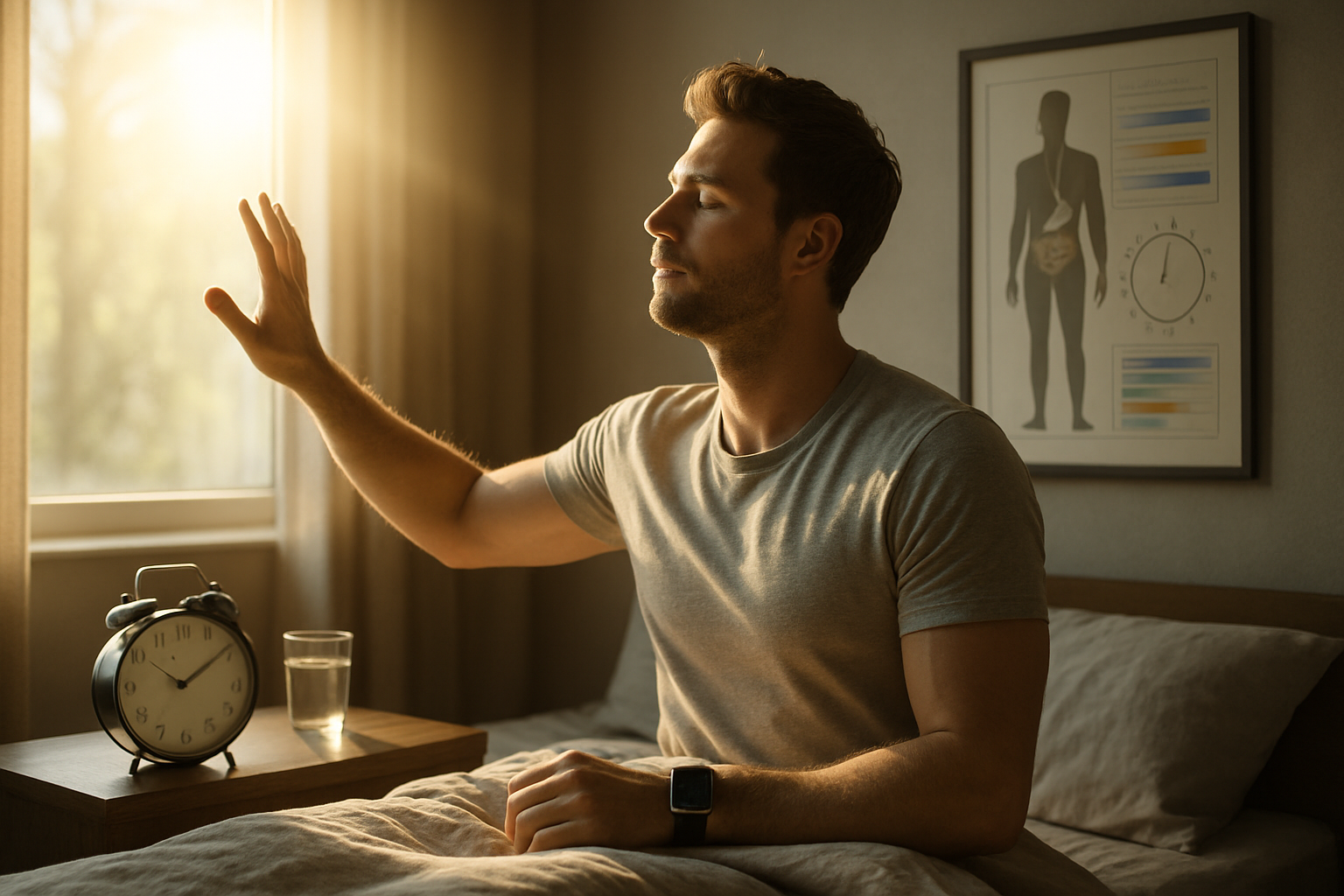Biohacking Your Circadian Rhythm: The New Frontier in Sleep Optimization
Sleep is more than just a nightly ritual—it's a complex biological process that affects every aspect of our health. But what if we could fine-tune our sleep patterns to maximize our well-being? Enter circadian rhythm biohacking, a cutting-edge approach to optimizing our internal clocks. How can we harness the power of our body's natural rhythms to enhance our sleep quality, boost energy levels, and improve overall health?

The Science Behind Circadian Rhythms
Our circadian rhythms are governed by a master clock in the brain called the suprachiasmatic nucleus (SCN). This tiny region, located in the hypothalamus, orchestrates a symphony of biological processes, from hormone production to body temperature fluctuations. The SCN takes cues from our environment, particularly light exposure, to keep our internal clock in sync with the external world.
Research has shown that disruptions to our circadian rhythms can have far-reaching consequences. Shift work, jet lag, and even the blue light emitted by our devices can throw our internal clocks into disarray, leading to issues like insomnia, mood disorders, and increased risk of chronic diseases.
Light: The Master Regulator
Light is the most potent zeitgeber (time-giver) for our circadian system. Our eyes contain specialized photoreceptors called intrinsically photosensitive retinal ganglion cells (ipRGCs) that detect changes in light intensity and communicate directly with the SCN. This mechanism evolved to keep our ancestors in tune with the natural light-dark cycle of the sun.
In our modern world of artificial lighting and round-the-clock screen time, our circadian rhythms often become misaligned. Biohackers are now experimenting with precise light exposure protocols to reset and optimize their internal clocks. This might involve using bright light therapy in the morning to suppress melatonin production and boost alertness, or wearing blue-light blocking glasses in the evening to promote natural melatonin release.
Chronotype Optimization
Not everyone’s internal clock ticks to the same rhythm. Chronotypes—our natural tendencies to sleep and wake at certain times—vary from person to person. Understanding and working with your chronotype, rather than against it, is a key principle of circadian rhythm biohacking.
Researchers have identified several distinct chronotypes, from early birds to night owls and various in-between categories. By aligning your daily activities with your natural chronotype, you can potentially enhance your productivity, mood, and overall well-being. Some biohackers are even experimenting with flexible work schedules that accommodate different chronotypes, leading to improved performance and job satisfaction.
Meal Timing and Metabolic Alignment
Our eating patterns play a crucial role in regulating our circadian rhythms. The timing of our meals can influence our metabolism, hormone production, and even the expression of certain genes. Time-restricted feeding, a form of intermittent fasting that aligns food intake with our circadian rhythms, has shown promising results in improving metabolic health and sleep quality.
Advanced biohackers are now exploring the concept of chrononutrition—tailoring not just when we eat, but what we eat, to our circadian rhythms. For example, consuming carbohydrates earlier in the day and protein-rich meals closer to bedtime may help optimize energy levels and support muscle recovery during sleep.
Temperature Regulation for Better Sleep
Body temperature fluctuations are closely tied to our circadian rhythms. Our core temperature naturally drops as we prepare for sleep and rises as we wake. Biohackers are leveraging this knowledge to enhance sleep quality through strategic temperature manipulation.
Techniques like pre-sleep cooling, where individuals lower their body temperature through cool showers or specialized bedding, can help signal to the body that it’s time to sleep. Conversely, exposure to warmth in the morning can help accelerate the wake-up process and boost alertness.
Biohacking Toolkit: Circadian Optimization Strategies
-
Practice consistent light exposure: Get bright light exposure within 30 minutes of waking and minimize blue light 2-3 hours before bed
-
Sync meal times with circadian rhythms: Consider time-restricted feeding, limiting food intake to an 8-12 hour window
-
Optimize sleep environment: Keep bedroom cool (around 65°F or 18°C) and completely dark
-
Use a sunrise alarm clock to simulate natural morning light
-
Experiment with adaptogenic herbs like Rhodiola or Ashwagandha to support stress response and circadian alignment
-
Track your sleep patterns and energy levels using wearable devices or apps to identify your optimal sleep-wake schedule
As we continue to unravel the complexities of our internal clocks, circadian rhythm biohacking offers exciting possibilities for enhancing our health and performance. By aligning our daily routines with our body’s natural rhythms, we can potentially unlock a new level of vitality and well-being. However, it’s important to approach these techniques with caution and ideally under the guidance of a healthcare professional. The future of sleep optimization is bright, and by harnessing the power of our circadian rhythms, we may just discover the key to living in harmony with our biological nature.




